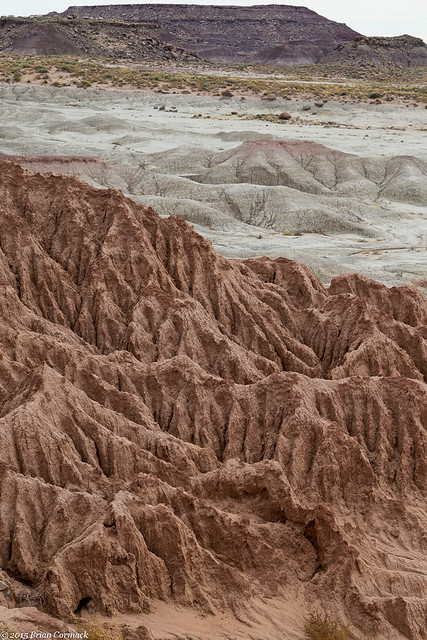
We drove deeper into the park and then hiked the short Crystal Forest trail. The paved trail winds past hundreds of petrified logs, scattered across the ground.
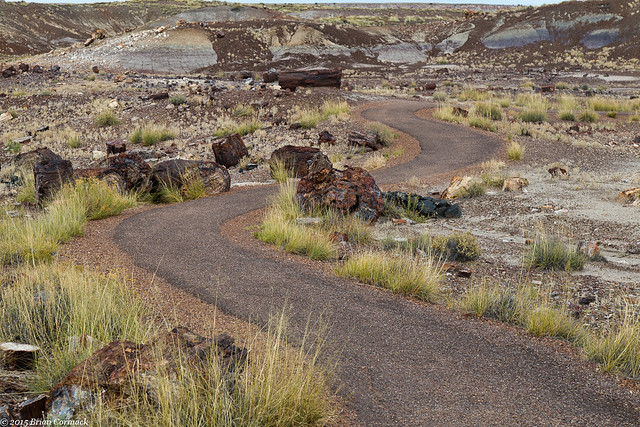
The petrified wood is actually fossilized trees that lived way back in the Late Triassic period of the Mesozoic era (about 225 million years ago, give or take). The downed trees accumulated in stream beds, and were then covered with sediment. Some of that sediment was volcanic ash, which had silica that was dissolved by ground water. That silica was carried into the logs, which slowly replaced the organic matter in the trees with quartz crystal.
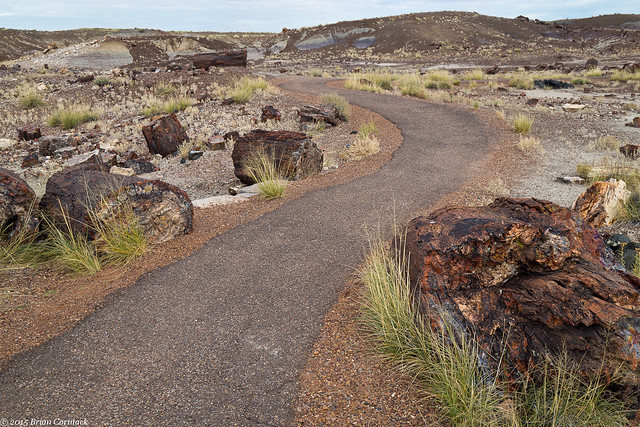
A lot of the petrified trees retained their basic shape, so they still look like trees even after being buried for hundreds of million of years and being turned to rock.
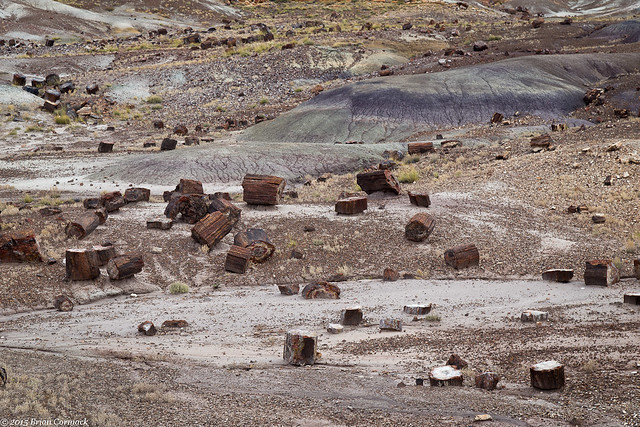
There have been nine species of trees identified among the fossils of the Petrified Forest, and all are from trees that are extinct.

There used to be much more petrified wood in the park, but people have been stealing wood from here ever since it was first discovered in the 1800s. The land was first preserved as a National Monument in 1906 in an effort to prevent the theft of the petrified wood. The Petrified Forest became a National Park in 1962.
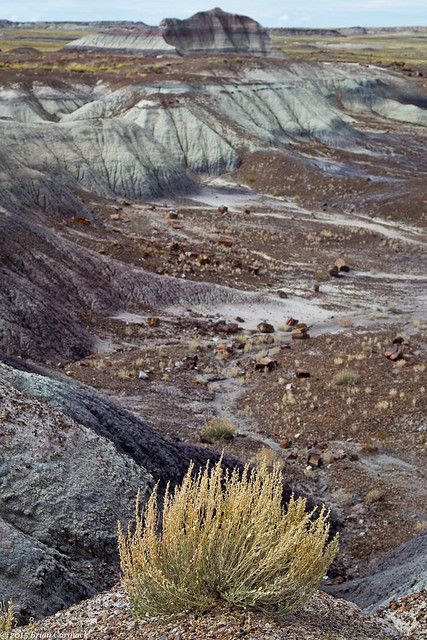
The logs often appear like they have been cut with a saw, but the cracks were formed naturally. The quartz is hard, but brittle. When the ground around the logs was eroding away, pressure and stresses lead to cracks which widened over time. Quartz naturally breaks at an angle, leading many people to constantly ask the park rangers who cut the logs.
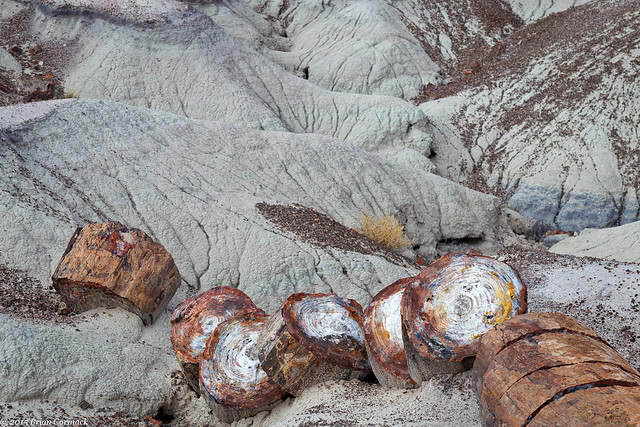
After finishing the trail, we got back in the car and drove to the Blue Mesa area. Here the landscape again changes, turning into rocky badlands.
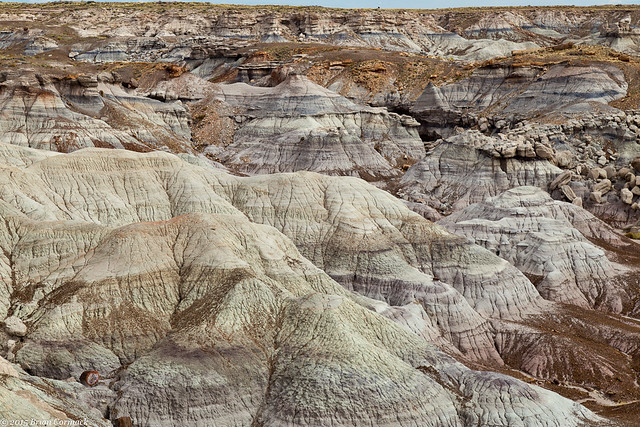
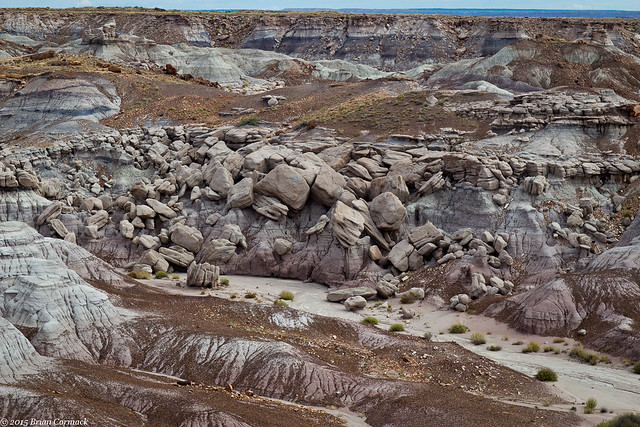
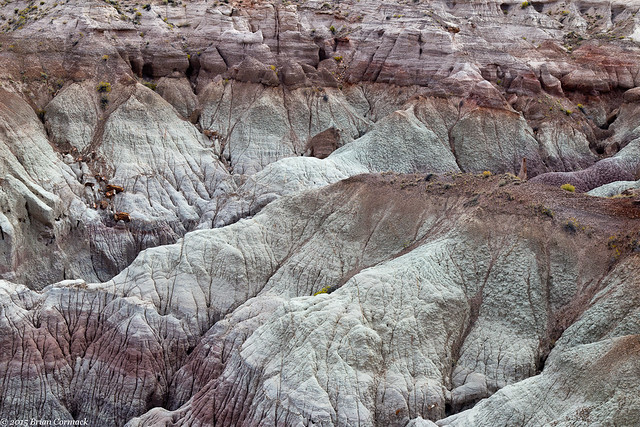
A short trail drops down into the Blue Mesa, visiting the hills made of the bluish-colored bentonite clay. This entire landscape still looked completely alien, as if some Jedi could run through here in the next Star Wars movie.

The trail through the Blue Mesa is short (only about a mile), but I didn't have enough time to do the whole hike. So I decided to just do part of it, which turned out to be the steepest part of the trail.
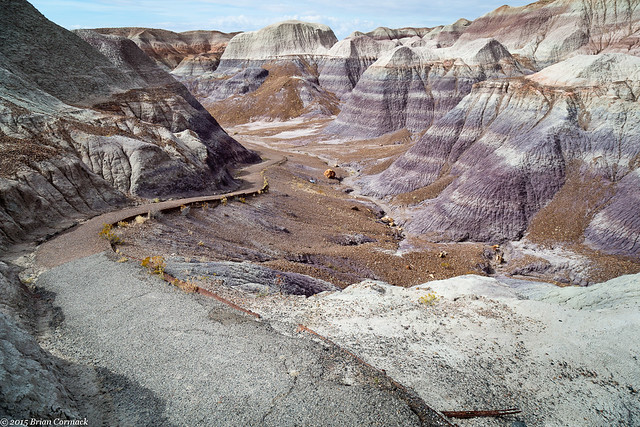
The trail runs steeply up the hill in a few switchbacks. I'm not the most in-shape person, but the walk up the hill and the elevation left me out of breath.

If you don't want to do the hike, the National Park Service was kind enough to place a few overlooks along the road for you. This popular overlook has a wide view of the Blue Mesa, and the trail below.
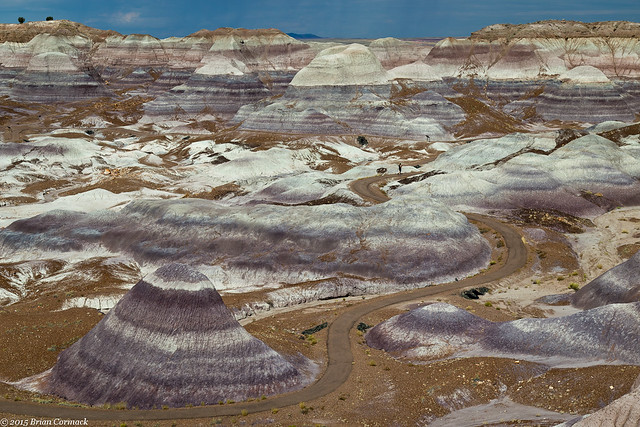
We got back on the main park road and headed north, passing by these rock formations that are called "The Teepees."
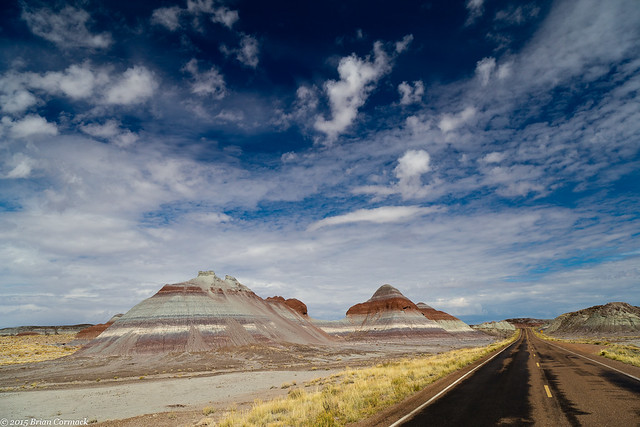
The road passes by I-40, and then comes to a marker commemorating where Route 66 used to pass through the park. The road is gone, but there is an old car parked here as a memorial.

Heading further north, the landscape changed yet again. We drove into the Painted Desert region of the park. The Painted Desert lives up to its name, the rocks are a deep and colorful red.
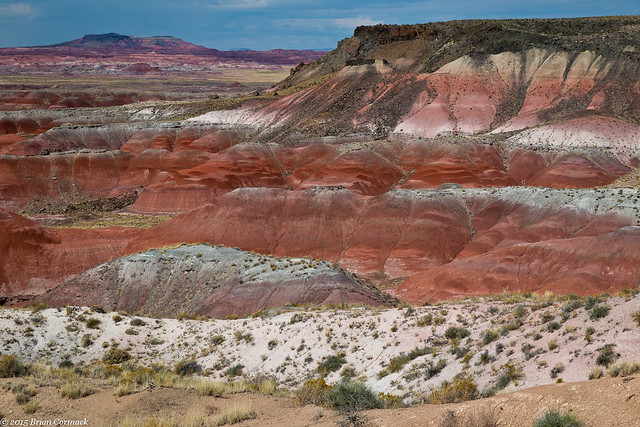
The exposed rock in the Painted Desert are estimated to be at least 200 million years ago, and the color is because of mineral deposits.
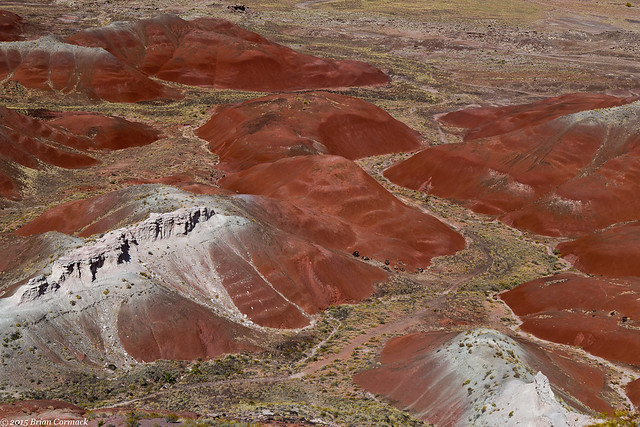
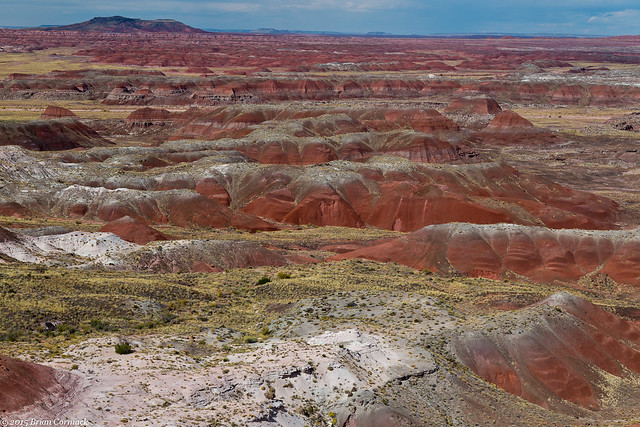

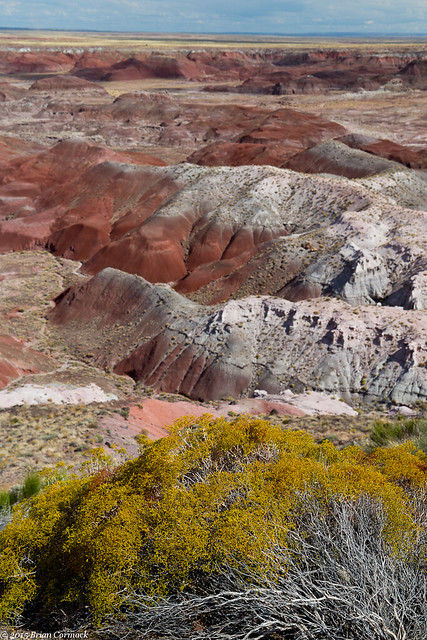
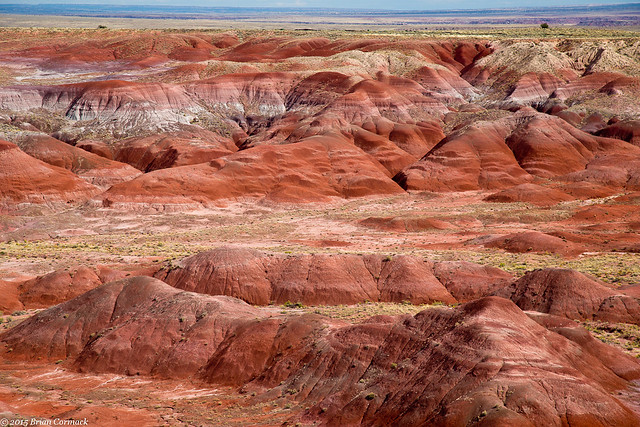
We then got onto the freeway and headed towards our next big destination on the trip - The Grand Canyon.


No comments:
Post a Comment